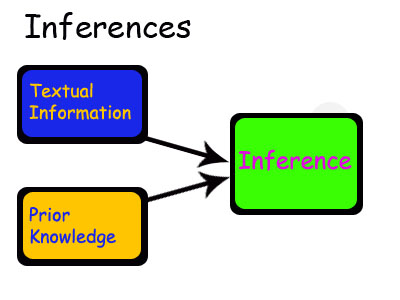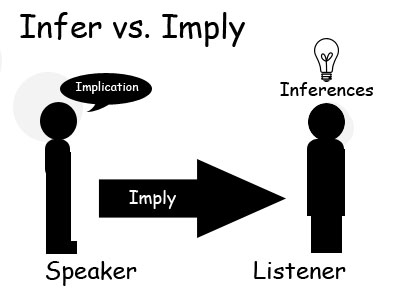1. Select a Topic: Choosing an appropriate topic is absolutely essential. This will be the foundation of the whole research process, so choose carefully. You will want to select a topic that interests you, because reading and writing about the topic will be less painful. Think of the things about which you are genuinely curious, and let your curiosity guide. Remember that you can change or alter your topic as you begin doing research, so don't put too much pressure on the initial choice. Just choose a topic that you like and one which fits the guidelines for your assignment. If you can't think of a topic, check out this list of research paper topics to help you get started. Choose a topic that is not too broad to sufficiently cover and not so narrow that you won't find any research on it.
2. Gather Resources: Reading all of the available material your topic is probably not possible if you have a deadline for your paper, but you should collect as many resources and materials as you can before you begin closely reading. In this way you can assess how much information is available on your topic before you dive in too deeply. Also, determine whether your internet sources are credible. Cut and paste web links into a text document and retrieve or request whatever physical sources you can access. Once you understand how much information is available to you, you can again revise your topic. This time consider what most interests you about your subject in light of your recent research.
3. Select the Works You Will Read: Since reading the works will take a substantial amount of your time, before you read anything briefly pursue each source to see if the author's writing style is at your reading level. If a text is too complex for you, you're probably better off selecting a text that is easier to read. Oftentimes academics deliberately make their writing dense and cryptic, rather than writing in a way that is clear and easy to understand, in an effort to demonstrate their intelligence. But you don't have to play this game. Choose writing that is easy to understand. You will probably get more meaning out of it and, ironically, sometimes the people who use the most words say the fewest things.
4. Read the Texts: This is the part of the research process on which students are most likely to procrastinate. Once you have the information in your head, you'll want to express it, but many students are threatened by nonfiction texts. Don't be scared. You won't have to read everything. Reading a nonfiction text is not like reading a novel. You don't have to read them in a linear fashion, from front to back. Feel free to cherry pick. Only read the information for which you are looking. You can skim and scan; however, if you decide you will quote, paraphrase, or otherwise reference information from a text, make sure that you thoroughly understand it, lest you appear foolish.
5. Take Notes on Your Research: As you are reading your resources, pieces of information will intrigue you. If you are researching a topic in which you are interested, you may find portions of the text exciting. These are the things of which you should make note. If you own the text, highlight or underline good information or otherwise make a memo of the page number and source in your research notes. If you are using electronic sources, just cut and paste interesting information into your word processor for easy quoting later.
6. Write Your Thesis Statement: Your thesis statement is merely a sentence that says what your are going to do in your paper. Usually they begin with "I," such as in the following example: "I will explain the causes for World War I." It is important that you keep your thesis statement in mind throughout the writing process. If you find yourself including information in your paper that does not fit into your thesis statement, you should alter your thesis statement to reflect what your paper is doing. Don't let your thesis contain you. As you write, you may go back and forth between multiple routes in your paper. You may decide to go both ways. It's no matter, because you can always revise your thesis to match your writing.
7. Create Your Rough Draft: The goal of a rough draft is basically to fill paper. Everything may not be perfectly organized. You may make mistakes in grammar, punctuation, and word choice. You may fall off of your thesis, but the key here is that you are producing writing. As you are writing your rough draft, you may go back and reread what you wrote, improving it when possible, but don't get hung up on revision. Put your research notes into an essay, and logically weave them together, removing the bits that don't belong and commenting when insights occur to you. Your goals should be to accurately represent what your sources have said about your subject, as well as putting yourself into the paper.
8. Make Quote Sandwiches: One of the most useful development templates when writing a research paper is what I call the quote sandwich. There's no rule stating how much of your paper should be references to other texts and how much should be original writing, but in my opinion commenting with more than a sentence or two before and after a quote demonstrates that the researcher is controlling the paper, not the research. So here's what you do: first, introduce the argument that your quote will support. Then, introduce your quote word for word. Use quotation marks and if your quote is longer than four lines, use block quotes. Lastly, explain how the quote relates to your argument. Don't assume the quote explains itself, because it doesn't. Even if it seems obvious to you, it's still your job to explicitly explain how the text you've introduced into your paper connects to and furthers your argument.
9. Bring It All Together: Before you ask for the opinions of other people, make sure that your paper is doing what you want it to do. Read through it several times. Fix any grammar, punctuation, and word choice errors that you notice. If you're unsure, consult an expert or research the issue. Make sure that every argument in your essay can be logically connected back to your thesis. If an argument does not connect to your thesis, expand or revise your thesis to include it or omit it entirely. Begin your paper with an interesting statement, idea, or question and attempt to meaningfully conclude your paper. Once you are confident in what you have written, it's time to get feedback.
10. Get Feedback and Polish: Sometimes it takes a new set of eyes to see an old problem. Writers may assume that their intended meaning will be understood, when readers may require more information or additional explanations. That's why it's important to get another person's feedback before you submit your paper. If at all possible, you should schedule some time with your teacher or professor so that they can give your feedback on your writing. Since they are the one's who will be evaluating your work, their input would be most valuable.
Writing a research paper is an art, not a science, so no single set of step-by-step directions will apply to all situations. Nonetheless, the process discussed in this post has worked for me many times in the past and may work for you as well. Please leave any comments or experiences that you'd be willing to share below. May your composition process go smoothly and interestingly.
| By Mr. Morton |



